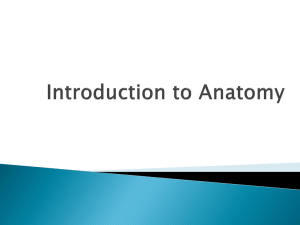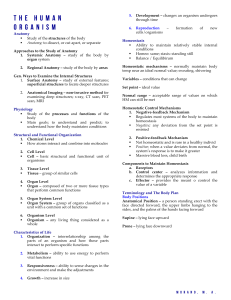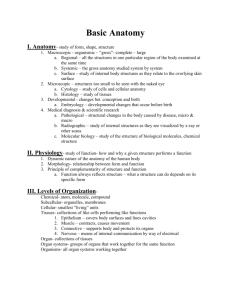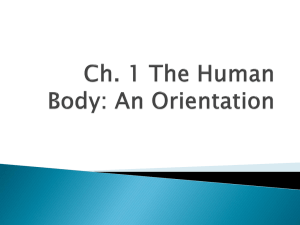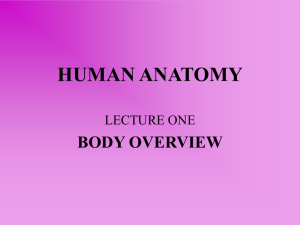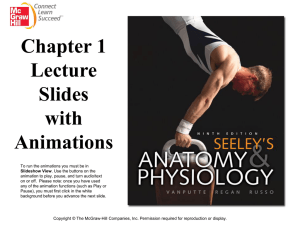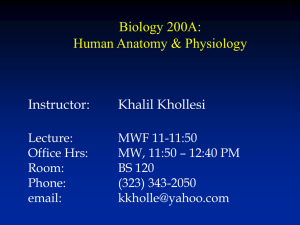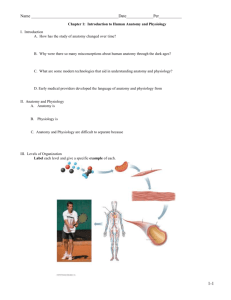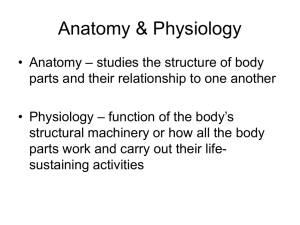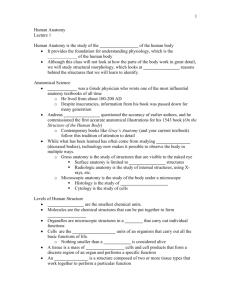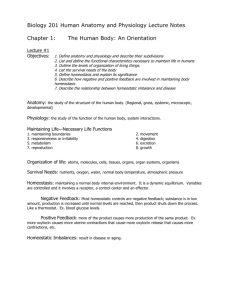Ch. 1 Study Guide
advertisement
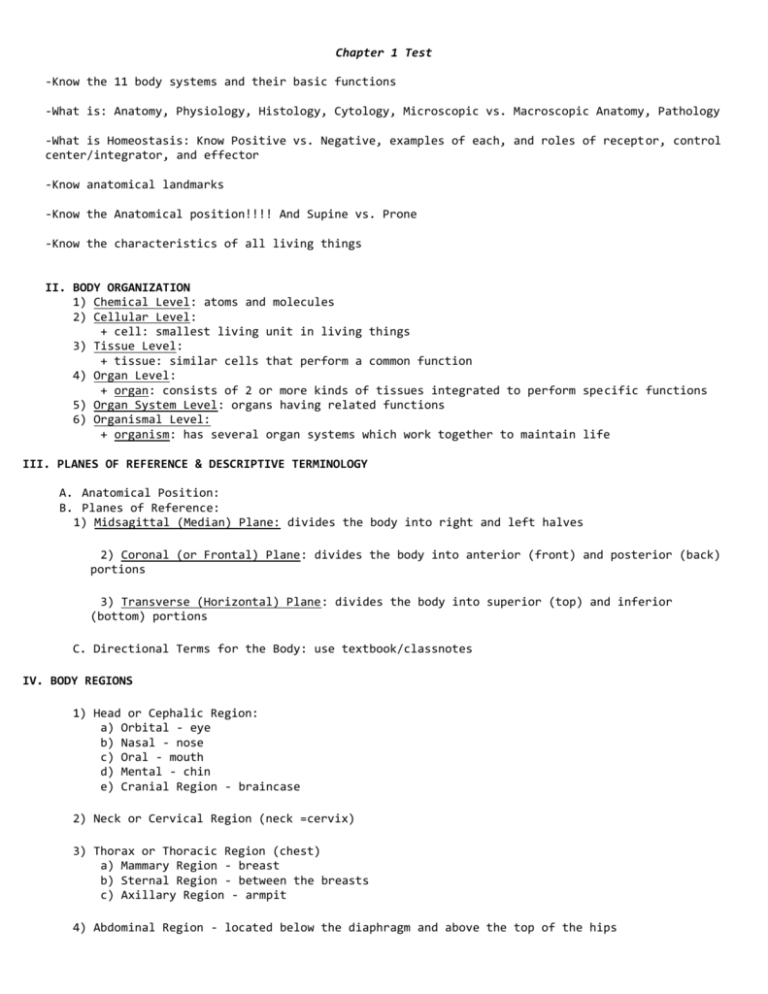
Chapter 1 Test -Know the 11 body systems and their basic functions -What is: Anatomy, Physiology, Histology, Cytology, Microscopic vs. Macroscopic Anatomy, Pathology -What is Homeostasis: Know Positive vs. Negative, examples of each, and roles of recept or, control center/integrator, and effector -Know anatomical landmarks -Know the Anatomical position!!!! And Supine vs. Prone -Know the characteristics of all living things II. BODY ORGANIZATION 1) Chemical Level: atoms and molecules 2) Cellular Level: + cell: smallest living unit in living things 3) Tissue Level: + tissue: similar cells that perform a common function 4) Organ Level: + organ: consists of 2 or more kinds of tissues integrated to perform specific functions 5) Organ System Level: organs having related functions 6) Organismal Level: + organism: has several organ systems which work together to maintain life III. PLANES OF REFERENCE & DESCRIPTIVE TERMINOLOGY A. Anatomical Position: B. Planes of Reference: 1) Midsagittal (Median) Plane: divides the body into right and left halves 2) Coronal (or Frontal) Plane: divides the body into anterior (front) and posterior (back) portions 3) Transverse (Horizontal) Plane: divides the body into superior (top) and inferior (bottom) portions C. Directional Terms for the Body: use textbook/classnotes IV. BODY REGIONS 1) Head or Cephalic Region: a) Orbital - eye b) Nasal - nose c) Oral - mouth d) Mental - chin e) Cranial Region - braincase 2) Neck or Cervical Region (neck =cervix) 3) Thorax or Thoracic Region (chest) a) Mammary Region - breast b) Sternal Region - between the breasts c) Axillary Region - armpit 4) Abdominal Region - located below the diaphragm and above the top of the hips 5) Pelvic Region - between the hip bones 6) Upper Extremity a) Deltoid Region - shoulder (acromial) b) Brachium Region - arm c) Cubital (Antecubital) Region - elbow region d) Antebrachium Region - forearm e) Carpal Region - the "wrist" f) Hand 1) Palmar 2) Pollex-thumb 7) Lower Extremity a) Femoral Region - thigh b) Patellar Region - front surface of knee c) Popliteal Region - back of knee d) Crural Region - leg e) Foot 1) Plantar - sole 2. Calcaneus-heel of foot V. BODY CAVITIES 1) Cranial Cavity (endocranium) - brain 2) Thoracic Cavity a) 2 Pleural b) Mediastinum c) Pericardial (chest cavity) each encases a lung - area between the lungs, know what organs/structures it contains - contains the heart 3) Abdominopelvic Cavity: a) Abdominal Cavity - digestive organs b) Pelvic Cavity - reproductive organs and bladder VI. SEROUS MEMBRANES -- Def: composed of tissue, and either cover/support/protect organs or line some body cavities * secrete serous fluid * consists of two layers: 1) Parietal serous membrane - lines body walls 2) Visceral serous membrane - lines outside of the organs themselves The _______________ region refers to the area around the armpit. a. sternal b. mammary c. cubital d. axillary e. pelvic The brain and spinal cord are found in which cavity? The diaphragm separates which cavities? What is the difference between visceral and parietal membranes? What are the functions of the serous membranes? What does the mediastinum contain?
